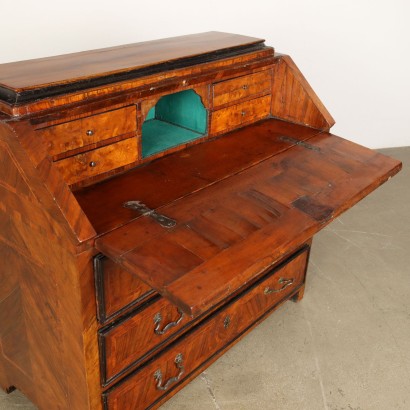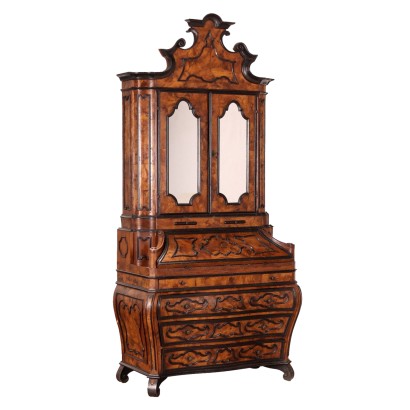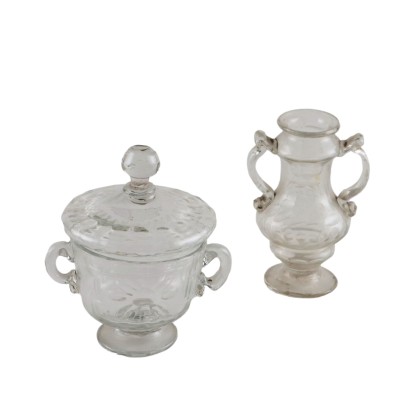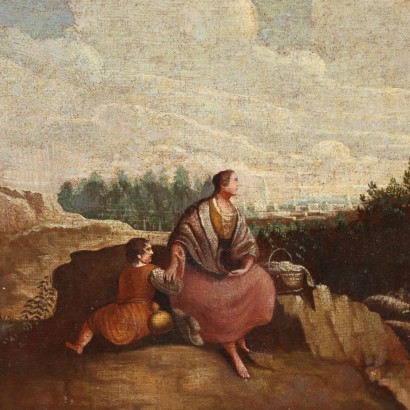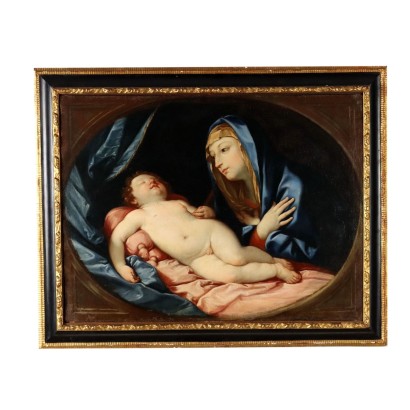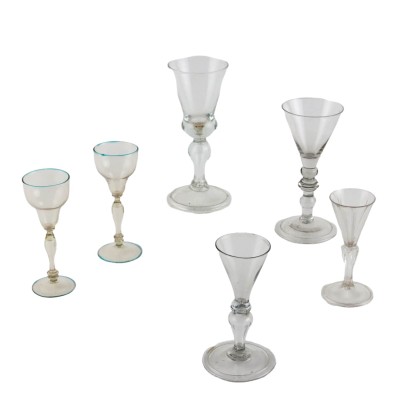Ancient Lombard Flap Cabinet Walnut Maple Bois de Rose XVIII Century - Lombardy, Mid XVIII Century
Features
Lombardy, Mid XVIII Century
Age: 18th Century / 1701 - 1800
Origin: Lombardia, Italy
Main essence: Maple , Brazilian Rosewood , Walnut
Material: Walnut Burl Veneer
Description
Antique but heavily reworked flap front with flap door concealing replaced scribbling with four small drawers and central open compartment covered with green cloth, three drawers below. The entire structure is veneered in walnut burl, bordered with maple and bois de rose. Mid-19th century Italy.
Product Condition:
Product that requires restoration and polishing due to age and wear. We try to present the actual state of the furniture as fully as possible with photos. Should certain details not be clear from the photos, the description shall prevail.
Dimensions (cm):
Height: 105
Width: 114
Depth: 54
Additional Information
Age: 18th Century / 1701 - 1800
18th Century / 1701 - 1800 Main essence:
Maple
Hard, light wood used for inlays. It grows mainly in Austria, but it is widespread throughout the northern hemisphere, from Japan to North America, passing through China and Europe. It is one of the lightest woods ever, tending to white, it is similar to lime or birch wood. The briar is used in the production of ancient secretaires .
Brazilian Rosewood
It is a hard, light blond wood, but with strong red and pinkish veins, which is obtained from tropical trees similar to rosewood. Its veins are reminiscent of striped tulips, which is why it is called tulipwood in English-speaking areas. It is used for inlays, often combined with bois de violette. In the 1700s and 1800s it was highly appreciated and used in France and England for precious veneers. It gives off scent for decades if not centuries after curing.
Walnut
Walnut wood comes from the plant whose botanical name is juglans regia , probably originally from the East but very common in Europe. Light or dark brown in color, it is a hard wood with a beautiful grain, widely used in antique furniture. It was the main essence in Italy throughout the Renaissance and later had a good diffusion in Europe, especially in England, until the advent of mahogany. It was used for solid wood furniture and sometimes carvings and inlays, its only big limitation is that it suffers a lot from woodworm. In France it was widely used more than anything else in the provinces. In the second half of the eighteenth century its use decreased significantly because mahogany and other exotic woods were preferred.
Material: Walnut Burl Veneer
Other customers have searched:





